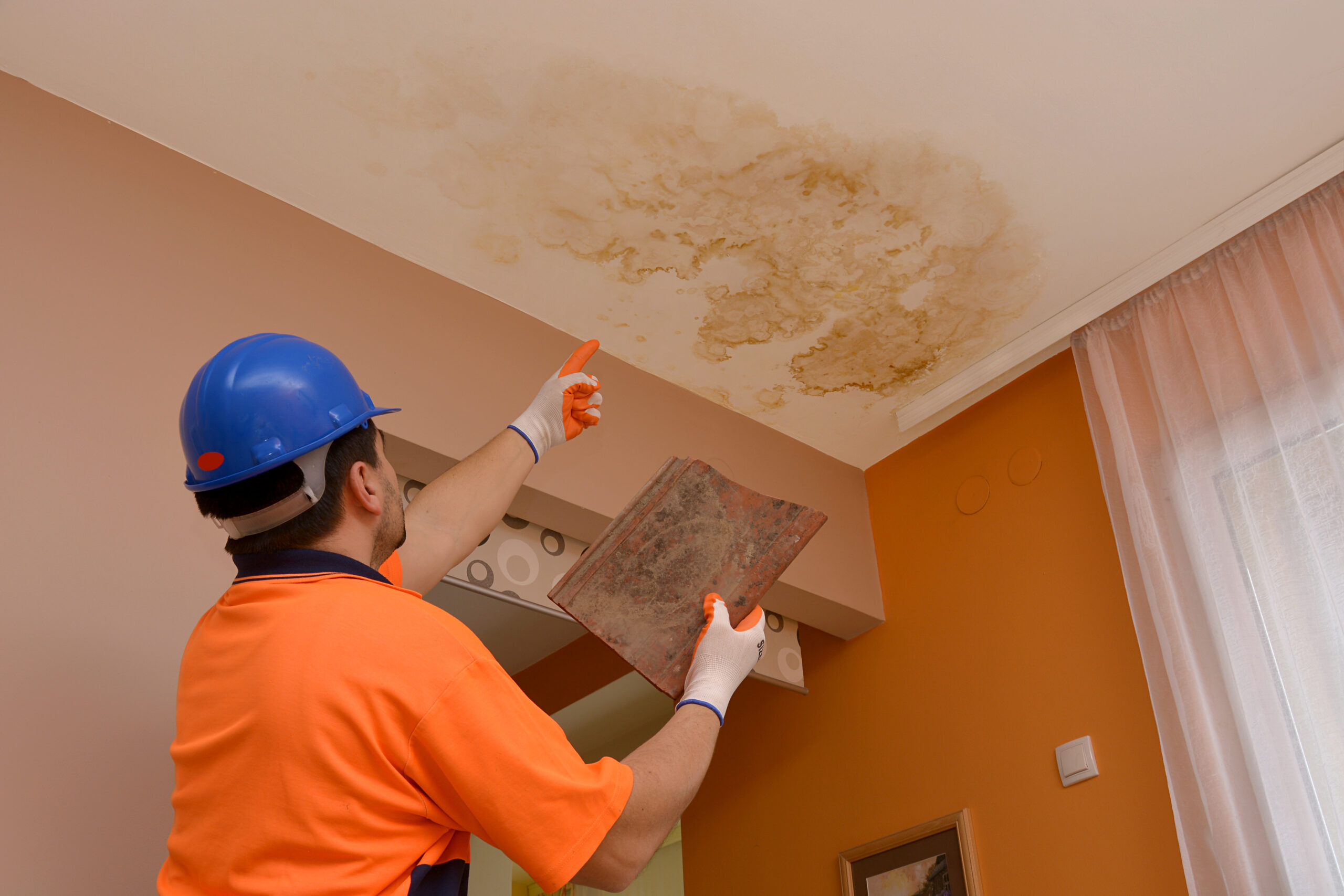Your roof is one of the most important components of your home, providing protection from the elements and maintaining the structural integrity of your house. However, over time, even the best roofs can develop problems. Some of these issues are minor and easily fixed, while others can cause significant damage if not addressed promptly. In this blog, we’ll discuss common roofing problems, their causes, and how you can fix them to keep your home safe and secure.
1. Roof Leaks
Problem: Roof leaks are one of the most common roofing issues homeowners face. Leaks can develop due to damaged shingles, improperly installed flashing, or clogged gutters that prevent water from draining properly.
Causes:
– Damaged or missing shingles due to wind or hail.
– Cracked or improperly sealed flashing around chimneys, vents, or skylights.
– Clogged gutters that cause water to back up onto the roof.
– Ice dams in colder climates, which cause water to pool and seep under the shingles.
How to Fix It:
– Identify the source of the leak: Start by inspecting your attic for signs of water stains or moisture. Trace the water back to its source on the roof.
– **Replace damaged shingles: If missing or broken shingles are the cause, you can easily replace them yourself with a pry bar, hammer, and replacement shingles.
– Seal flashing: If the flashing is damaged or not sealed properly, apply a layer of roofing sealant around the edges.
– Clear gutters: Make sure gutters and downspouts are clear to allow water to flow off the roof and away from the foundation.
For more severe leaks, especially those caused by extensive damage or underlying structural issues, it’s best to call a professional roofer.
2. Broken or Missing Shingles
Problem: Shingles can become damaged or dislodged due to harsh weather conditions like strong winds, heavy rain, or hail. Missing shingles leave your roof exposed to water damage, leaks, and other problems.
Causes:
– Aging roof materials that have become brittle and cracked.
– Severe weather such as windstorms, hail, or falling debris.
– Poor-quality shingles or improper installation.
How to Fix It:
Inspect the roof: Regularly inspect your roof, especially after storms, to identify any broken, curled, or missing shingles.
Replace shingles: Damaged or missing shingles can be replaced easily by lifting the edges of the surrounding shingles, removing the nails, and sliding a new shingle into place. Make sure to nail the new shingle in securely and apply roofing sealant if necessary.
For widespread shingle damage or if the shingles are nearing the end of their lifespan, you may need to consider a full roof replacement.
3. Flashing Issues
Problem: Flashing is the metal material used to seal joints and edges on the roof, such as around chimneys, vents, and skylights. If flashing is damaged or improperly installed, water can seep into the home, causing leaks and moisture damage.
Causes:
– Poor installation of flashing materials.
– Corrosion or rusting of metal flashing over time.
– Damage from wind, storms, or falling debris.
How to Fix It:
– Inspect flashing regularly: Look for signs of rust, cracks, or gaps in the flashing.
– Seal minor gaps or cracks: If the flashing is still structurally sound but has small gaps or cracks, apply roofing cement or sealant to prevent water infiltration.
– Replace damaged flashing: If the flashing is corroded or badly damaged, remove the old flashing and install new flashing in its place. This may require the help of a professional roofer if the damage is extensive.
4. Poor Roof Ventilation
Problem: Poor ventilation in the attic can lead to a range of problems, from moisture buildup and mold growth to higher energy bills and premature roof deterioration. Without proper ventilation, heat and moisture get trapped in the attic, which can damage the roof’s structure and reduce its lifespan.
Causes:
– Insufficient intake or exhaust vents in the attic.
– Blocked or improperly installed vents.
– Excessive insulation that prevents airflow.
How to Fix It
– Install or upgrade attic vents: Make sure your attic has both intake and exhaust vents to allow for proper air circulation. Ridge vents, soffit vents, and gable vents are common solutions.
– Check for blockages: Ensure that vents are not blocked by debris, insulation, or other materials.
– Improve insulation: Ensure that attic insulation is properly installed and not obstructing airflow. However, don’t over-insulate, as this can restrict ventilation.
5. Gutter Problems
Problem: Clogged, sagging, or improperly installed gutters can cause water to back up and overflow onto the roof, leading to leaks, water damage, and even foundation problems.
Causes:
– Accumulation of leaves, twigs, and debris in the gutters.
– Improperly sloped gutters that prevent water from draining.
– Damage from ice dams, wind, or debris.
How to Fix It:
– Clean gutters regularly: Clear out leaves, twigs, and other debris from your gutters to ensure proper water flow.
– Fix sagging gutters: Check for loose or sagging gutters and reattach them securely to the fascia board.
– Adjust gutter slope: Make sure the gutters are properly sloped toward the downspouts to prevent water from pooling.
– Install gutter guards: Gutter guards can prevent debris from accumulating in your gutters, reducing the need for frequent cleaning.
6. Roof Punctures or Holes
Problem: Roof punctures or holes can occur from falling branches, foot traffic on the roof, or improper installation of roof equipment like satellite dishes or HVAC units. Even small holes can lead to leaks and other damage if not repaired.
Causes:
– Foot traffic from contractors or DIYers walking on the roof.
– Falling tree branches or debris from storms.
– Improper installation of equipment like antennas, solar panels, or skylights.
How to Fix It:
– Inspect for holes: Regularly inspect your roof for punctures, especially after storms or if contractors have recently been on your roof.
– Patch small holes: For minor punctures, use roofing cement and a patch of the same roofing material to cover the hole and seal it against water.
– Replace damaged sections: If the puncture is too large for a simple patch, you may need to replace the damaged section of roofing material.
7. Shrinkage or Blistering of Roofing Materials
Problem: Certain roofing materials, especially those made of synthetic rubber or asphalt, can shrink, crack, or blister over time due to weather exposure, temperature fluctuations, and aging.
Causes:
– Extreme temperatures causing the material to expand and contract.
– Aging and UV exposure leading to material deterioration.
– Poor installation or defective roofing materials.
How to Fix It:
– Inspect for shrinkage or blistering: Look for signs of shrinking or blistering, which can lead to cracks and leaks.
– Repair minor blisters: Small blisters can be repaired by cutting them open, drying the area, and applying a patch of roofing material over the top.
– Replace affected sections: For more extensive shrinkage or blistering, it may be necessary to replace sections of the roof to prevent further damage.
When to Call a Professional Roofer
While many minor roof issues can be handled with basic DIY repairs, there are times when it’s best to call a professional roofer:
– Severe leaks or widespread water damage.
– Extensive shingle damage or multiple missing shingles.
– Structural issues such as sagging or roof deck damage.
– Chimney or skylight leaks that require specialized repair.
– Roof damage after a major storm or hail event.**
A professional roofer will have the expertise, tools, and safety equipment needed to assess the damage and make necessary repairs quickly and efficiently.
Roof problems are inevitable, but with regular maintenance and timely repairs, you can extend the life of your roof and prevent costly damage to your home. By identifying common issues such as leaks, damaged shingles, and poor ventilation, you can take steps to fix them yourself or call in a professional when needed. Keep your roof in top condition, and it will continue to protect your home for many years to come.


Recent Comments